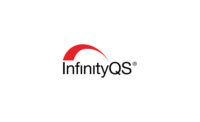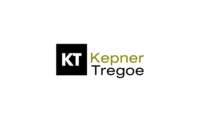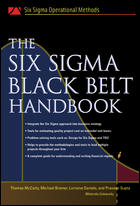One who is well-versed in managing quality in a manufacturing environment knows the importance of reducing deviation and identifying the reasons behind it; the impact of employing the most useful data models; and the potential of finding indicators of prospective cost savings. He or she knows the tools—be they set control charts, histograms, Pareto charts or more—to help analyze various sets of data, and the strategies to guide a team toward change.
But simply focusing on defect prevention does not guarantee that long-term transformation will take effect. A team needs good management to achieve that.
So what is good management? Some say it goes part in parcel with leadership. The famous Dr. Deming has said that excellent leadership drives out fear in an organization and creates an environment of trust and respect. In such a climate, workers can feel free to speak their minds and in that open dialogue, stumble upon ways to improve the workplace. But how does an organization achieve such an environment?
Today, many are answering that question by utilizing a management concept called Operational Excellence. This idea incorporates an array of ideologies, methods and tools to sustainably improve performance through marked metrics. Some view Operational Excellence as a hybrid of other continuous improvement plans such as Lean Manufacturing and Six Sigma, with a focus on long-term cultural change.
“[Operational Excellence] involves getting the right focus from leadership, the right culture on the shop floor, standardized and harmonized business processes across the enterprise, and implementing the needed supporting technologies,” says Matthew Littlefield, president and analyst at corporate benchmarking research firm LNS Research. “Everyone knows about how companies like Toyota, Motorola and GE pioneered systems like Lean and Six Sigma, but others aren’t just copying these approaches as they might have 10 years ago.”
For example, Clariant, a multi-billion dollar specialty chemical manufacturer, has spearheaded a unique Operational Excellence approach, says Littlefield. It developed its own internal management system—the “Clariant Way”—that incorporates multiple ISO standards with a focus on the continuous improvement and quality management business processes that these standards define. “It also incorporates best practices around Lean and Six Sigma for well-defined work processes, visual management, and statistical techniques for measuring and reducing process variation and cost,” Littlefield explains.
Another example is the internal management system created by Bostik, a leading adhesives manufacturer. The company develops competencies for leadership across the business and also embeds quality management into all supply chain and engineering functions.
According to the stipulations for The Shingo Institute, an organization that identifies success in Organization Excellence, there are 10 principles that make a company eligible for the annual Shingo Prize.
They are:
- Respect every individual
- Lead with humility
- Seek perfection
- Assure quality at the source
- Flow and pull value
- Embrace scientific thinking
- Focus on process
- Think systematically
- Create constancy of purpose
- Create value for the customer
These ideas seem like no-brainers when it comes to creating rapport and therefore employee support. But in addition to creating a productive workplace, embracing these behaviors might propel a staff to go above and beyond improvement.
“It is also worth mentioning that many leading companies are using these Operational Excellence programs to also propel forward their sustainability initiatives and to improve things like energy efficiency, environmental stewardship and employee safety,” Littlefield notes.
Giving the Floor to Those Who Are On It
One facet of creating an engaging and respectful workplace is considering the needs—and the voices—of the employees in it. Vic Sower, a quality management consultant, says top healthcare firms such as Dow Corning, Vitae Pharmaceuticals and Johnson & Johnson use an employee-centric approach to management.
“The benefits these firms derive go far beyond increased employee satisfaction and reduced turnover,” Sower explains. “These policies encourage increased communication, collaboration and information sharing throughout the organization, resulting in a greater flow of new ideas and increased efficiency and effectiveness.”
Those new ideas are what can take a company from simply quality-competent and thrust it into the sphere of an inspired organization. Lou Ann Lathrop, ASQ Fellow and past member of the ASQ Board of Directors, echoes the importance of an employee-centric approach in the workplace. She cites cross functional teams as a place to start.
“[Cross-functional teams] must make sure to have the correct representation and depth of knowledge,” she explains. “Empowered work teams [and] self directed work are also very effective when they are actually empowered.”
ISO—Here to Stay
Cross-functional teams are emphasized in IS0 9000, a popular management standard. Lathrop describes ISO standards as the discipline that separates the men from the boys, so to speak, in the management sphere. “ISO management standards are like what sit-ups and pushups do for world class athletes—most people don’t like to do them, but there is no substitute,” she explains. “You don’t necessarily need to do the official auditing. But you need to have the basic principles of order and discipline along with self imposed review.”
While the new standards aren’t yet published, ISO standards will be seeing some changes in the near future to clarify management terminology. According to Jeff Rodgers, senior lead auditor with RMS LLC, the first release will be June 2015 for standards 9001 and 14001. “All will have a common text so organizations can easily integrate the standards into one business system,” he says.
Other specific changes that new ISO standards will incorporate are:
The terms document and data control and records” will be changed to “documented information” and encompasses both procedures and records in one clause
There will be 10 clauses for all management system standards with identical text for the purpose of integration of multiple standards i.e. 9001, 14001, 18001, etc.
New terms consist of: risks and opportunities, context of the organization, business is used twice this far and more.
There are no procedure requirements from the annex SL. Annex SL is embedded in ISO directive 1 and is an annex, it is not a specific document. It is being called “the high level text”.
June 2015 is the target release date of ISO 9001 and 14001.
Rodgers says there will be a three year grace period for organizations to conform with the new standards.



